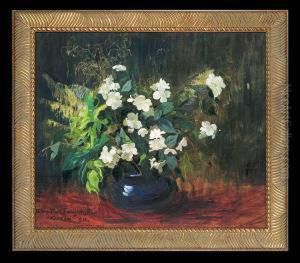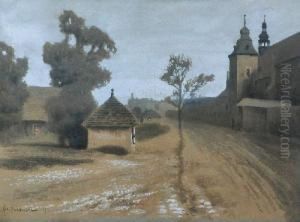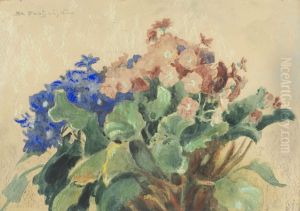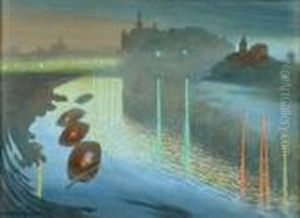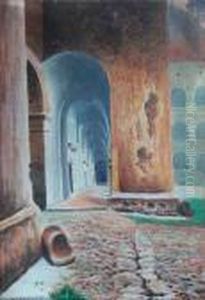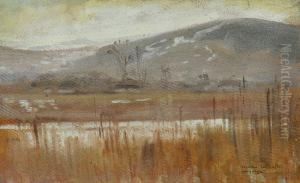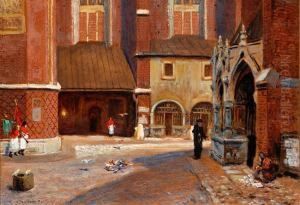Stanislaw Ignacy Fabijanski Poraj Paintings
Stanisław Ignacy Fabijański Poraj was a Polish artist whose life and career remain somewhat obscured by the passage of time. Born in 1865, in the Polish-Lithuanian Commonwealth, his artistic journey reflects the broader currents of European art history at the turn of the 20th century, intertwining with the cultural and political upheavals of his homeland. Despite the scarcity of detailed records about his personal life and the uncertainty surrounding his death date, Fabijański's work provides a window into the vibrant artistic movements that swept through Europe during his lifetime.
Fabijański's artistic education and early career were marked by the prevalent trends of Romanticism and later Impressionism. He is known to have traveled extensively across Europe, which was a common practice among artists of his time seeking inspiration and artistic education. These travels likely exposed him to a variety of artistic styles and movements, informing his evolving style. His works, which include a range of subjects from landscapes to portraits, exhibit a keen observation of light and color, characteristic of the Impressionist influence.
Throughout his career, Fabijański was involved in the intellectual and artistic circles that contributed to the burgeoning sense of Polish national identity in the late 19th and early 20th centuries. This period was marked by the partitions of Poland, and many artists of Fabijański's generation were deeply influenced by the political situation of their homeland, which often found expression in their art. However, Fabijański's oeuvre suggests a more subtle engagement with these themes, often focusing on the beauty of the Polish landscape and the everyday life of its people rather than overt political statements.
The details of Stanisław Ignacy Fabijański's later life and career are less well-documented, and the date of his death remains uncertain. Despite this, his contributions to Polish art are recognized among art historians and collectors, who appreciate his work for its technical skill and the glimpse it offers into the complex cultural landscape of Poland at a time of national upheaval and artistic innovation. Fabijański's legacy, while perhaps not as widely recognized as some of his contemporaries, remains an important part of the story of Polish art.


